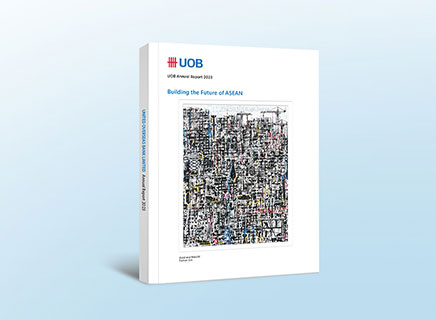Scaling and growing in ASEAN? Find out how you can better navigate the challenges of doing so with this report.
Investments in ASEAN’s financial technology (FinTech) firms tracked last year’s bumper funding, clocking in US$4.3 billion in the first nine months of 2022 (YTD 2022) – higher than the combined sum from 2018 to 2020. However, dark clouds lie ahead, with funding in Q3 down by 64 per cent from the previous quarter, mimicking a broader slide in global FinTech funding.
While funding momentum may be taking a pause, ASEAN’s keen adoption of digital services continues. In our FinTech in ASEAN 2022: Finance, Reimagined report, we look at how embedded finance has become one of the key drivers in the creation of accessible digital ecosystems. By surveying more than 4,000 respondents and speaking with industry leaders, we find out what makes the embedded approach tick, and why it would continue to flourish.

Staying resolute: ASEAN funding braces for winter
In the FinTech in ASEAN 2021: Digital takes flight report, we saw how a prolonged pandemic still led to record FinTech funding in ASEAN, along with a heightened adoption of FinTech solutions such as e-wallets, cryptocurrencies and online investment platforms.
This year, ASEAN’s FinTech sector remained an attractive proposition amid external pressures. Investments in the region now stand at 7 per cent out of US$63.5 billion poured into FinTech globally during the same period, up from 2 per cent in 2018.
ASEAN FinTech segment keeps its charm
Funding activity posted US$4.3 billion in the first nine months of 2022 despite geopolitical uncertainties and rate hikes to combat high inflation. The average deal size has also increased to US$26.5 million from US$23 million year-on-year.
Singapore and Indonesia continue to dominate FinTech funding
Together, Singapore (43 per cent) and Indonesia (33 per cent) accounted for more than three-quarters of ASEAN’s total funding – Indonesia with a substantial 11 percentage point gain over last year. Of the 163 funding deals that took place, more than half (55 per cent) went to Singapore-based FinTech firms.
Payments remains the most funded FinTech category in ASEAN
The payments category received the most funding at US$1.9 billion, followed by alternative lending at US$506 million. Despite the broader crypto market’s volatile performance this year, the cryptocurrency category unseated investment tech to take third place at US$461 million.
Gaming and NFT companies enter the FinTech fray, as tough conditions curb growth
The number of new FinTech firms set up across ASEAN has dropped to an all-time low of 127 companies, as the sober macroeconomic outlook drags down investor sentiment. What is noticeable though, is that in the last two years, the bulk of new FinTech firms hail from the gaming and NFT industries, as investments to develop and monetise the metaverse ecosystem grows.
Finance everywhere: Businesses try on FinTech
The idea behind embedded finance is simple: Offer users relevant financial services where they might need them the most, and stand to gain from an additional income stream. Where superapps excel in integrating services from various verticals in one platform, non-financial businesses have been evolving their standalone service apps to include in-app payments, lending and the like.
To further understand the embedded finance landscape in ASEAN, we asked more than 4,000 consumers about their digital finance habits.

Positive reception for embedded finance apps
The awareness of embedded financial services among the ASEAN-6 nations is high, with 81 per cent of survey respondents reporting they were aware of apps with built-in financial services. Respondents in the Philippines and Vietnam held a resounding lead in this regard at 91 per cent and 90 per cent respectively.
In terms of usage, 70 per cent of respondents said they use such applications, with participants from Thailand and Vietnam leading the region at 83 per cent. Singapore’s lower usage may be due to the population’s financial needs being well-served by a mature financial ecosystem and products like credit cards.
Almost three-quarters of those who use apps with embedded finance use them at least once a week – with the highest in Vietnam at 85 per cent. This underscores how such apps have the potential to increase user engagement through enhanced utility.
Seamless payments and perks drive usage
Across ASEAN, respondents use apps with embedded finance primarily because of payment convenience, with the exception of Singapore, where rewards points and discounts drive usage.
Embedded finance in action
Here, we explore some examples of both embedded finance enablers—FinTechs that offer businesses the technology to incorporate financial services within their apps—as well as existing platforms that have incorporated features like payments, loans, investing and insurance to better serve their customers’ needs.

Looking ahead: What’s next for embedded finance?
As embedded finance continues to grow, we look at various areas of opportunity and how regulation could affect its stride.
Modernising traditional industries
As an emerging market, there are still many industries in Southeast Asia that need to be digitised, such as education, healthcare, agriculture, property and logistics. FinTechs play an important role in supporting SMEs from these largely untapped segments in finding new business opportunities and staying competitive in the digital age. Building a portable, secure FinTech product that can be scaled across multiple industries quickly will open doors for profitable partnerships.
Monetising virtual worlds
The heightened anticipation around Web3 and the metaverse is paving the way for gaming and digital asset companies to enter the FinTech fray. Understanding how cryptocurrencies and digital tokens can be embedded within a user’s journey in the virtual world is imperative for financial players to remain relevant amid a rapidly changing world. Developments in this space will be keenly watched.
Regulation must keep pace with industry changes
As non-financial entities begin offering financial services, should they be subject to the same stringent regulations as financial institutions, or should they self-regulate? How can existing regulations better keep up with fast-evolving business models and the democratisation of finance? Consistent and meaningful dialogue between regulators and the expanding ecosystem players will be key to this transition. Regulators across ASEAN face tough decisions and will need to balance out access to financial services, while ensuring that consumers are not disadvantaged in that process.
Explore other reports

FinTech in ASEAN 2019: From Start-up to Scale-up

FinTech in ASEAN 2018: The Next Wave of Growth
Find out how you can ride on the growth opportunities in ASEAN with this report.

State of FinTech in ASEAN (2017)
ASEAN's growing FinTech industry is creating opportunities for the region's unbanked and underserved population.







